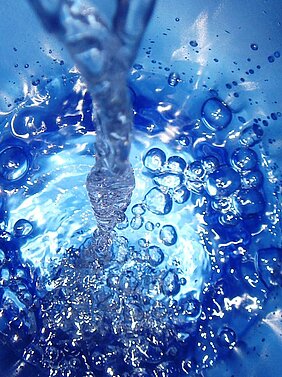The flushing of large-scale transport pipes and main lines with the aim of expelling loose deposits requires considerable resources. In this research project, intelligent operating strategies are developed to permanently prevent an accumulation of a critical build-up of deposits with an adapted method of operating the lines and therefore avoid flushing.
Large diameter transport pipes and primary lines form the main arteries of drinking water distribution systems. The high priority of these type of lines require special monitoring and operating concepts. In practice, operating changes such as an increased flow rate repeatedly cloud the water due to the mobilisation of the deposits that are present. The large water volume in these lines mean that quality issues are often long-lasting and extensive.
A further decline in water demand is anticipated in many areas in Germany as a result of demographic processes and technical changes. This will particularly involve a reduction in the average flow rates in the large diameter transport and primary pipes. The accumulation of deposits in the lines will be even greater.
Flushing concepts that exist for small-scale supply lines are usually not transferable for large-scale systems. Universally applicable strategies to reliably control the foreseeable challenges for large lines have not yet been developed and are therefore currently unavailable.
The aim of the research project is to develop strategies and concepts for water supply companies that enable the implementation of intelligent operating strategies for large-diameter pipes in order to prevent an accumulation of critical deposit levels by adjusting the way of operating the lines.

![[Translate to English:] Prüfstelle-Produktprüfung_Teststand Test centre and product testing](/fileadmin/_processed_/0/9/csm_TZW-Karlsruhe_Pruefung_Geraete-Teststand_377188946c.jpg)
























![[Translate to English:] [Translate to English:]](/fileadmin/_processed_/3/4/csm_homepage_Bild_Improvt__G_838f599682.jpg)
